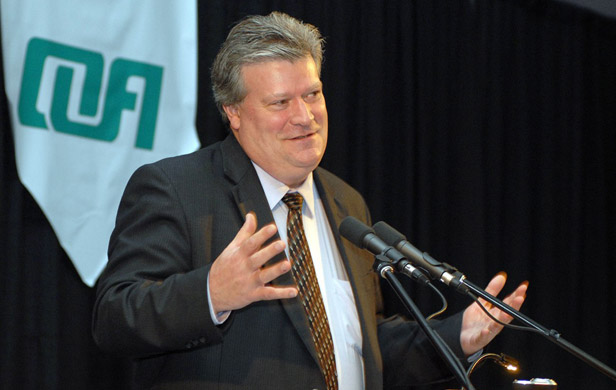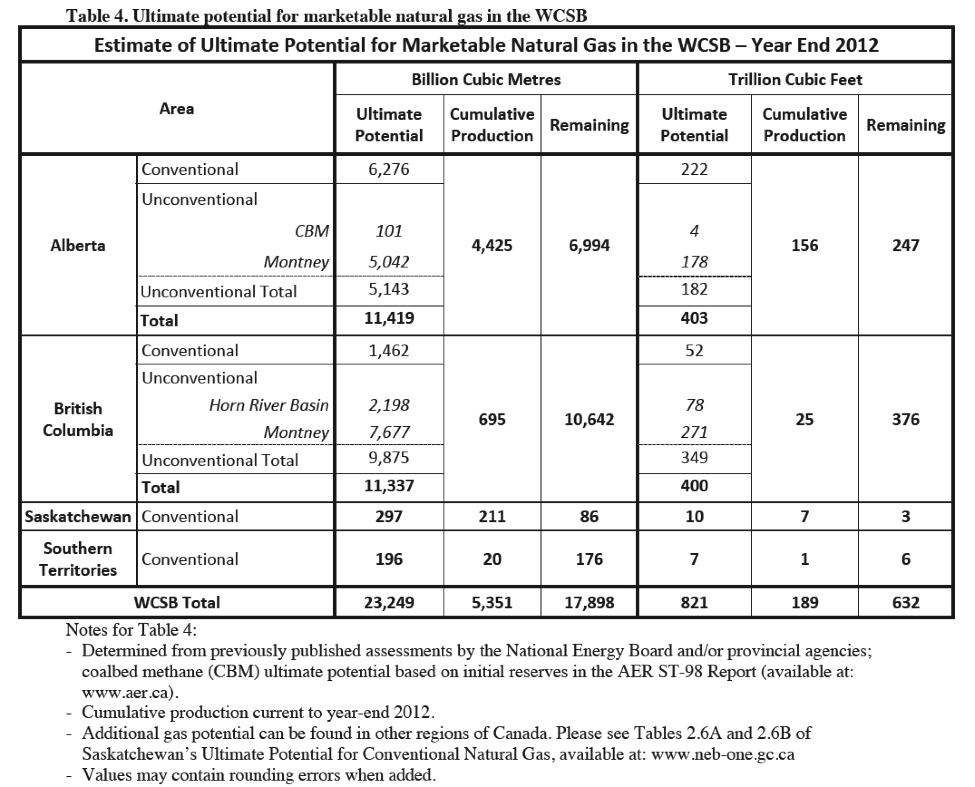
The following rebuttal from geoscientist David Hughes to BC Minister of Natural Gas Rich Coleman is republished with permission from the Canadian Centre for Policy Alternatives. The minister has been vocal about Mr. Hughes’ recent report on LNG, published by the CCPA.
After a lot of media coverage on my Clear Look at BC LNG report, Rich Coleman, Minister of Natural Gas, weighed in saying “the report ignored the studies of B.C.’s own scientists” and “they don’t do their research”. In fact, if Mr. Coleman had bothered to read my report, he would have noted that my numbers are cited from BC Oil and Gas Commission reports – the scientists Mr. Coleman employs.
The BC Government states that “British Columbia’s natural gas supply is estimated at over 2,933 trillion cubic feet” and “British Columbia has more than an estimated 2,900 trillion cubic feet of marketable shale gas reserves”. These statements strongly imply that this is recoverable gas and therefore is part of future supply and is marketable. In contrast, here are the actual numbers from the BC Oil and Gas Commission (Table 4 from page 6 of the BC Oil and Gas Commission report that the BC Government claimed doubled BC gas reserves).
Instead of 2,933 tcf, the table lists an ultimate marketable potential resource for BC of just 400 tcf, of which 25 tcf has already been recovered leaving 376 tcf remaining. In my report I added an additional 42 tcf from other potential sources to make sure I was being generous, of which 416 tcf is remaining.
The BC Government’s claim of 2,933 tcf of “marketable shale gas reserves” is therefore preposterous in the light of information from its own scientists. It appears the BC Government has conflated “in-place” resources with “marketable” resources. “In-place” resource estimates are not recoverable – typically no more than 10-20% of the in-place resource is recoverable from shale gas plays. The National Energy Board and BC Oil and Gas Commission scientists have made a best guess at what might be recoverable and suggest it is 376 tcf, or one-eighth of the amount touted by the BC Government. I have been generous in suggesting the BC Government’s number is only overstated by a factor of six.
The BC Government has also been conflating “resources” with “reserves”. Proven reserves have a specific meaning in that they have been proven to exist with the drill bit and are recoverable with existing technology under foreseeable economic conditions. Reserves are numbers you can take to the bank. According to the BC Oil and Gas Commission, proven raw gas reserves in BC were just 42.3 tcf at yearend 2013, a mere 1/70th of what the BC Government is touting as “marketable shale gas reserves”.
If the BC Government knows the difference between “in-place resources” and “marketable shale gas reserves”, its touting of 2,933 tcf of BC gas is deliberate deception. If it does not it is extremely shocking given that Mr. Coleman and his government are the stewards of BC’s remaining finite, non-renewable, heritage of natural gas.
The BC LNG Alliance, an industry lobby group for seven LNG proponents, simply parroted BC Government statements. Its President, David Keane, “said 2,933 trillion cubic feet is a figure that the commission and energy board geologists “do believe we have.”’ Keane further accused me of “cherry picking some of the facts”. If Keane had read my report he would have seen it is based on National Energy Board projections, not mine, so if anyone is to be accused of cherry-picking it is the NEB.
The BC Government and the BC LNG Alliance have no credibility on the gas supply numbers they state for the reasons listed above. But my report was about much more than that. We are dealing with a finite non-renewable resource for which there are no substitutes at the scale we use it. It will be needed domestically in the long term and extraction necessitates environmental impacts. It demands a longer term plan for the sake of the environment and future generations.



And now you know,cuz Johal told you so,,,,what a joke he’s become
How is it possible with what has unfolded over the last decade and a half anyone believes anything this guy has to say about everything
BC Liberal MLA Mike Bernier:
“The natural gas industry is a big part of British Columbia. A lot of that’s to do because of the resource that we have. You look at almost 3,000 trillion cubic feet of gas we have. I was reading a report here not too long ago. To put that in perspective, that’s enough gas to fuel every house in Canada for the next 8,000 years. This is a lot of gas.”
http://www.leg.bc.ca/hansard/40th3rd/20141124am-Hansard-v18n4.htm
MORE BS from a BC Liberal,
BC Stats reports that oil and gas extraction employs only 0.27% of the provincial workforce.
2013 Royalties from natural gas $581,000,000
Companies Deductions $412,000,000 ?
BC net from Royalties $169,000,000
So if someone looks at the amount of Royalties BC gets after deductions and compares it to the tobacco tax of $713,000,000
it appears that the oil and gas industry which according to BC Liberal MLA Mike Bernier in part “is a big part of British Columbia” is getting a fantastic deal at the expense of the BC taxpayer!
Well said, Hal. More on that subject from Norm Farrell:
https://commonsensecanadian.ca/gas-industry-contributes-just-0-01-bcs-revenues-jobs/
…but is LNG beneficial for our environment? You bet it’s not.
Obviously MLA Mike Bernier didn’t read this article. That volume of gas can only be coming from his government…and we haven’t talked about how fracking will double methane …. and they think LNG is environmentally friendly? The BC Liberals take us for rubes. I assure you Sir we are not.
I do believe that lying amongst our BC Liberal government members is systemic. They’ve lost their way. “It’s like in the West Wing. You do whatever it takes to win.” BC Liberal Quote.
Systematic, too.